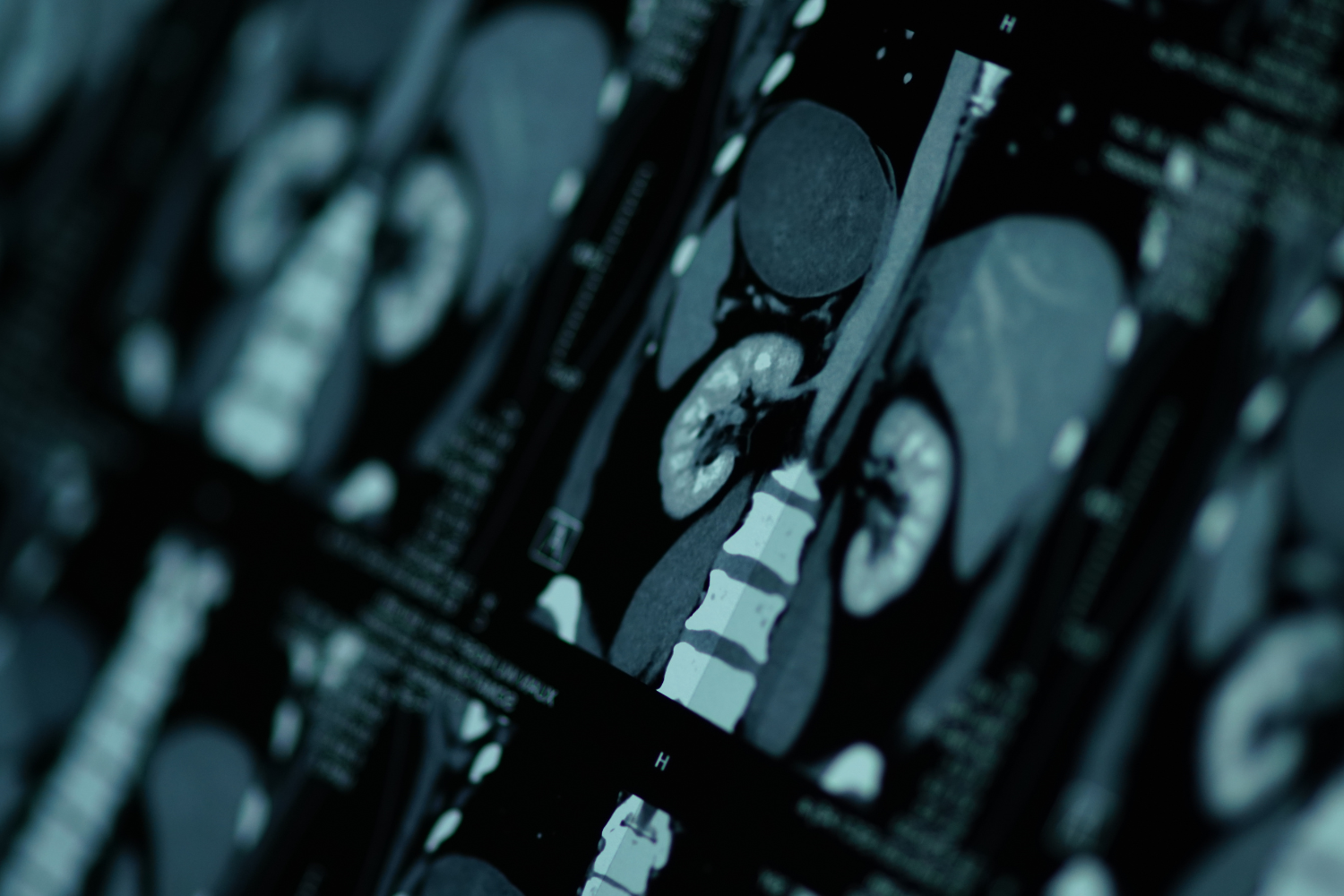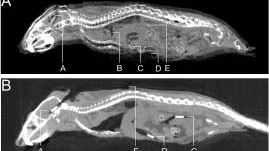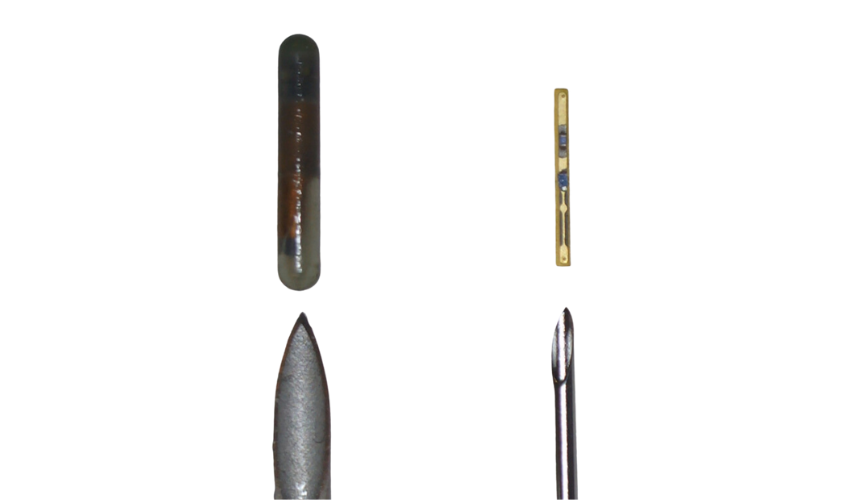
In the News
Preclinical imaging shaped by research-compatible RFID tag, Digitail
Imaging studies are a crucial aspect of the drug development journey as modern, innovative drug candidates aim to transform global health. By visualising the physiological and metabolic responses to disease and drug treatment, promising candidates can be cleared for clinical trials.
The laboratory rodents within preclinical imaging must be identifiable in order to allow for accurate tracking, monitoring and data collection. Preclinical research scientists in the field of imaging studies encountered issues with integrating animal identification methods with imaging. That is, until the introduction of Digitail, the world’s smallest RFID tag which is the ideal material composition, size, shape and durability for imaging studies.
Types of Preclinical Imaging
Imaging techniques in the preclinical research sector, today, boast an expansive and innovative approach to drug discovery applications. After the introduction of the X-rays, by Wilhelm Conrad Roentgen in 1895, the properties of this new type of radiation (which was able to go through materials of notable thickness) were taken and developed to form various radiograph techniques.
In the preclinical imaging subsector, there now exists a variety of imaging techniques to study the biological processes of diseases and anatomical responses to potential treatments. These include:
MRI
The most obvious and commonly recognised imaging tool is magnetic resonance imaging, which utilises magnets and radio waves to detail internal body structures.
Surprisingly, this is one of the most expensive forms of imaging with a particularly long turnaround time. Although employed in some preclinical imaging studies, it is not the most effective choice for temporal resolution.
CT
Computed tomography employs Roentgen’s X-rays to produce cross-sectional images of bones, tissues and organs, in quick turnaround times. However, its use in longitudinal studies is limited due to the use of ionizing radiation.

PET
An alternative method of tomography is preclinical PET imaging, also known as positron emission tomography, which deploys tracer liquid to highlight metabolic and molecular level processes.
Although this method of preclinical imaging requires specialised equipment and tracers, it offers the most absolute quantitative assessments of molecular targets.
Each modality of preclinical imaging has it’s pros and cons, and the method employed is usually dependant on the research, targets and study requirements. New and innovative imaging modalities continue to broaden our understanding of complex biological processes. For example, bioluminescence imaging has proved a highly sensitive method for tracking gene expression, cell migration and tumour growth in-vivo.
Regardless of the modality employed in imaging research, accurate identification of the laboratory rodents within a study cohort of any length or volume is highly important.
Unique identifiers are the only way in which specific biological information can be associated with behavioural insights. Creating links between imaging data, behavioural changes and individual study rodents results in traceable, efficient and error-free research results.
What is the purpose of preclinical imaging?
To understand the importance of choosing a compatible identification method, an immediate consideration should be the purpose of which the preclinical imaging is being conducted.
For example, preclinical imaging modalities are typically a part of research programs which aim to understand disease progressions, also known as disease modelling. Imaging laboratory mice and rats allows us to take information and data relating to how a disease penetrates the subject’s body and use this as a tool to translate the findings to the clinic.
The cognitive findings that imaging studies can provide to assist with brain function understanding is also pivotal for medical advancements. Imaging techniques can be performed as part of wider behaviour studies to assess brain activity and the behavioural effects of genetic modifications, therapeutics and more.
These are just two avenues of medical and global health in which imaging studies are vital. Various preclinical imaging modalities are also used to evaluate the safety and efficacy of new therapeutics and drug candidates. This means imaging covers not only disease understanding and motor effects but also treatment, medication and vaccines.
Radio frequency identification is the ideal method for imaging identification
Radio frequency identification methods are typically the most suitable identification approach during preclinical imaging because they match the needs of the preclinical research sector, which prioritises compliance, accuracy, ethical conduct and efficiency.
The research facilities, which include many hospitals and universities, are governed by animal welfare guidelines first and foremost. Every preclinical study program in the UK for example, must justify the laboratory rodent usage with the respective regulatory body against the Three Rs guidelines.
By using non-invasive radio frequency identification methods, research subjects experience reduced discomfort, stress handling and invasive applications of other methods such as ear tags and notching. RFID methods then boast the benefits of streamlined data collection, high throughput, automation and integration of all imaging study data.
Many preclinical imaging modalities are also often employed in longitudinal studies, where radio frequency identification methods offer the most suitability in terms of tracking over extended periods of time. This allows research studies to monitor longer-term changes in physiological parameters, disease progression and treatment responses.

Why are some tags incompatible with preclinical imaging?
The hurdle that presents itself for imaging research scientists and radiochemists is that the tag types available in today’s market are not specifically designed for laboratory rodent usage. The traditional glass transponder is one such example. This means their compatibility with various preclinical research studies and programs can often be limiting. Issues arise concerning:
Materials –
RFID tags are typically made up of metallic components which can affect imaging. Antennas or traces in particular contain metallic elements and it is these that can interfere with the modalities (MRI and CT specifically) resulting in distortions.
Tag location and durability –
Depending on the type of RFID tag, migration is usually anticipated. If the tag migrates, not only does this visualise in the imaging but it may affect the quality of the image as above.
Furthermore, RFID tags must be durable against repeated handling, sterilization procedures and various environmental conditions during longitudinal studies. Risks of malfunctions, migrations or degradation over time will compromise research data further.

Quality of imaging –
Interferences such as the above can mean that distortions, streaks, voids and more can affect the visibility of the anatomical structures. This not only impairs the assessment of the 3D image but can also hinder the progress of particular study types including drug development.
Electromagnetic risks –
There is a certain risk posed by RFID tags with metallic compounds reacting with the imaging equipment. Electromagnetic interference between the two can generate heat which in the worst case could compromise the welfare of laboratory rodents.
Frequency –
Certain RFID tags can operate at a similar frequency to the imaging equipment which leads to signal degradations. By disrupting the communication between the RFID tag and the reader device, any data collected risks inaccuracies.
Digitail, Somark’s unique RFID tag, is specifically designed for preclinical research use. This is what makes it the most compatible tag for imaging studies and programs. Our tags don’t contain any ferrous content, overcoming electromagnetic and frequency risks instantly.
The tag is not only 16 times smaller than the typical glass transponder, but it is encased in a Parylene C layer which offers a dielectric barrier, protecting the tag and rodent from any imaging equipment interferences.
With numerous IACUC and other ethical approvals, opting for radio frequency identification methods during preclinical imaging research is made simple with Digitail.
By overcoming the issues posed by glass transponder use in preclinical imaging, through its intrinsic design, Digitail opens the door for institutes to reap the many benefits it has in terms of automation, read accuracy and system integrations without the need to concentrate on the compatibility concerns with the innate aspect of preclinical imaging research.



